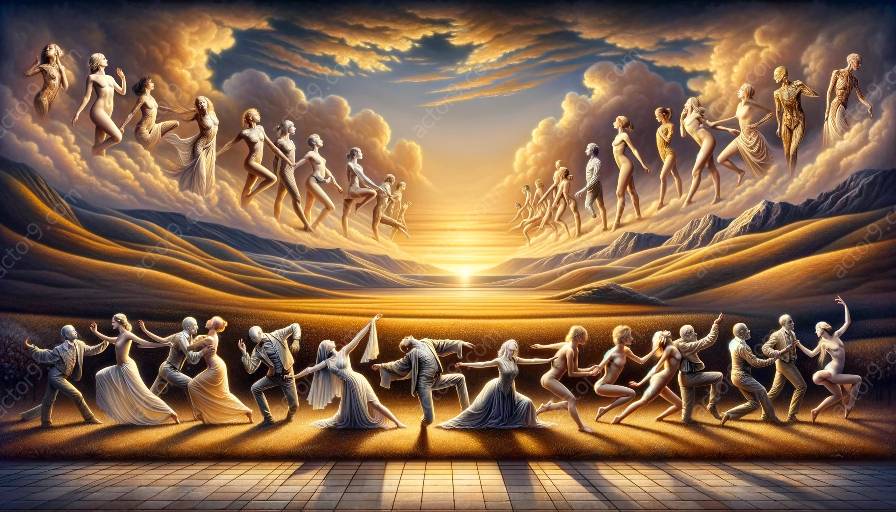Understanding the Power of Body Language in Conveying Emotion on Stage
Body language is a vital element in conveying emotion on stage, especially in the realm of physical theatre. It serves as a powerful tool for actors to express their innermost feelings and thoughts through the movement and gestures of their bodies. In this topic cluster, we delve into the intricate relationship between body language, emotion, and performance, shedding light on the ways in which actors can effectively use body language to captivate audiences and convey a range of emotions during theatrical performances.
The Role of Body Language in Conveying Emotion
Body language encompasses a wide array of nonverbal cues, including facial expressions, gestures, posture, and movement. These nonverbal signals play a crucial role in communicating an individual's emotional state, often conveying subtle nuances that words alone cannot express.
In the context of stage performance, body language becomes a primary vehicle through which actors can convey complex emotions, establish character depth, and forge a genuine connection with the audience.
Understanding the Language of the Body
Before delving into the practical application of body language in conveying emotion on stage, it is imperative to understand the fundamental principles and nuances of nonverbal communication. By decoding the language of the body, actors can harness its power to effectively express a wide spectrum of emotions, from joy and love to fear and despair.
Facial Expressions: One of the most potent channels of nonverbal communication, facial expressions can vividly convey an extensive range of emotions. From a subtle twitch of the lips to a furrowed brow, actors can use their facial expressions to create empathetic connections with the audience and convey the inner turmoil of their characters.
Gestures and Posture: Every movement and posture adopted by an actor on stage contributes to the portrayal of emotion. Whether it's a graceful sweep of the arms, a hunched back signifying despair, or a confident stride exuding determination, each gesture and posture becomes a part of the emotional narrative being conveyed.
The Art of Body Language Analysis
Analyzing and perfecting body language for theatrical performance demands a keen understanding of the intricate interplay between the physical and emotional realms. Body language analysis involves a meticulous examination of an actor's movements, gestures, and expressions to portray emotions effectively and authentically.
Emotional Alignment and Physical Expression
Body language analysis in the context of physical theatre focuses on the alignment of an actor's physical expressions with their emotional state. It involves the conscious synchronization of movements and postures with the character's inner emotional landscape, creating a seamless and compelling portrayal of emotion that resonates with the audience.
Cultural and Contextual Considerations: It is essential for actors to be mindful of cultural and contextual influences on body language, as these nuances can significantly impact the interpretation and reception of emotional cues. A comprehensive understanding of the cultural backdrop and historical context of a performance can enrich an actor's use of body language to convey emotion in a nuanced and culturally sensitive manner.
Physical Theatre and the Embodiment of Emotion
Physical theatre represents a unique platform for the exploration and expression of emotion through the body, transcending linguistic barriers to communicate universal emotions through physicality and movement. In this form of theatrical expression, body language takes center stage, with performers relying on their physical prowess to convey intricate emotional narratives.
The Expressive Potential of Movement and Spatial Dynamics
In physical theatre, movement becomes a language in itself, capable of articulating emotions with unparalleled depth and intensity. Performers use their bodies to create dynamic physical narratives, utilizing movement, rhythm, and spatial dynamics to evoke a myriad of emotions within the audience.
Transformation of the Body: Physical theatre often involves the expressive transformation of the body, enabling performers to embody a wide spectrum of characters and emotions. Through physical metamorphosis, actors can immerse themselves in the emotional essence of their characters, transcending verbal communication to evoke profound emotional responses from the audience.
Conclusion
Body language serves as a bridge between the internal world of emotions and the external realm of performance, allowing actors to convey profound and authentic emotional experiences on stage. By understanding the nuances of body language, engaging in meticulous analysis, and embracing physical theatre as a platform for emotional embodiment, actors can harness the full potential of nonverbal communication to truly captivate and move their audiences.




































